Path of ray of light passing through three liquids of refractive indices is as shown in Fig. Which liquid has the smallest index of refraction ?
 .
.
As is clear from Fig., in going from liquid to liquid , the ray of light bends away from normal. Therefore, .
Again, in going from liquid to liquid , the ray of light bends towards normal. Therefore, .
Hence the smallest index of refraction is .
 .
.
Topper's Solved these Questions
- BOOK - PRADEEPCHAPTER - RAY OPTICSEXERCISE - Conceptual problem(c)8videos
RAY OPTICS
- BOOK - PRADEEPCHAPTER - RAY OPTICSEXERCISE - Conceptual problem(d)14videos
RAY OPTICS
- BOOK - PRADEEPCHAPTER - RAY OPTICSEXERCISE - Solved Example(d)32videos
RAY OPTICS
- BOOK - PRADEEPCHAPTER - PROPERTIES OF BULK MATTEREXERCISE - Multiple choice questions7videos
PROPERTIES OF BULK MATTER
- BOOK - PRADEEPCHAPTER - SYSTEMS OF PARTICLES AND ROTATIONAL MOTIONEXERCISE - Assertion- Reason Type questions20videos
SYSTEMS OF PARTICLES AND ROTATIONAL MOTION
Similar Questions
Path of a ray of light passing through three liquids of reflective indices μ1,μ2,μ3 is as shown in Fig. Which liquid has the smallest index of reflection ?
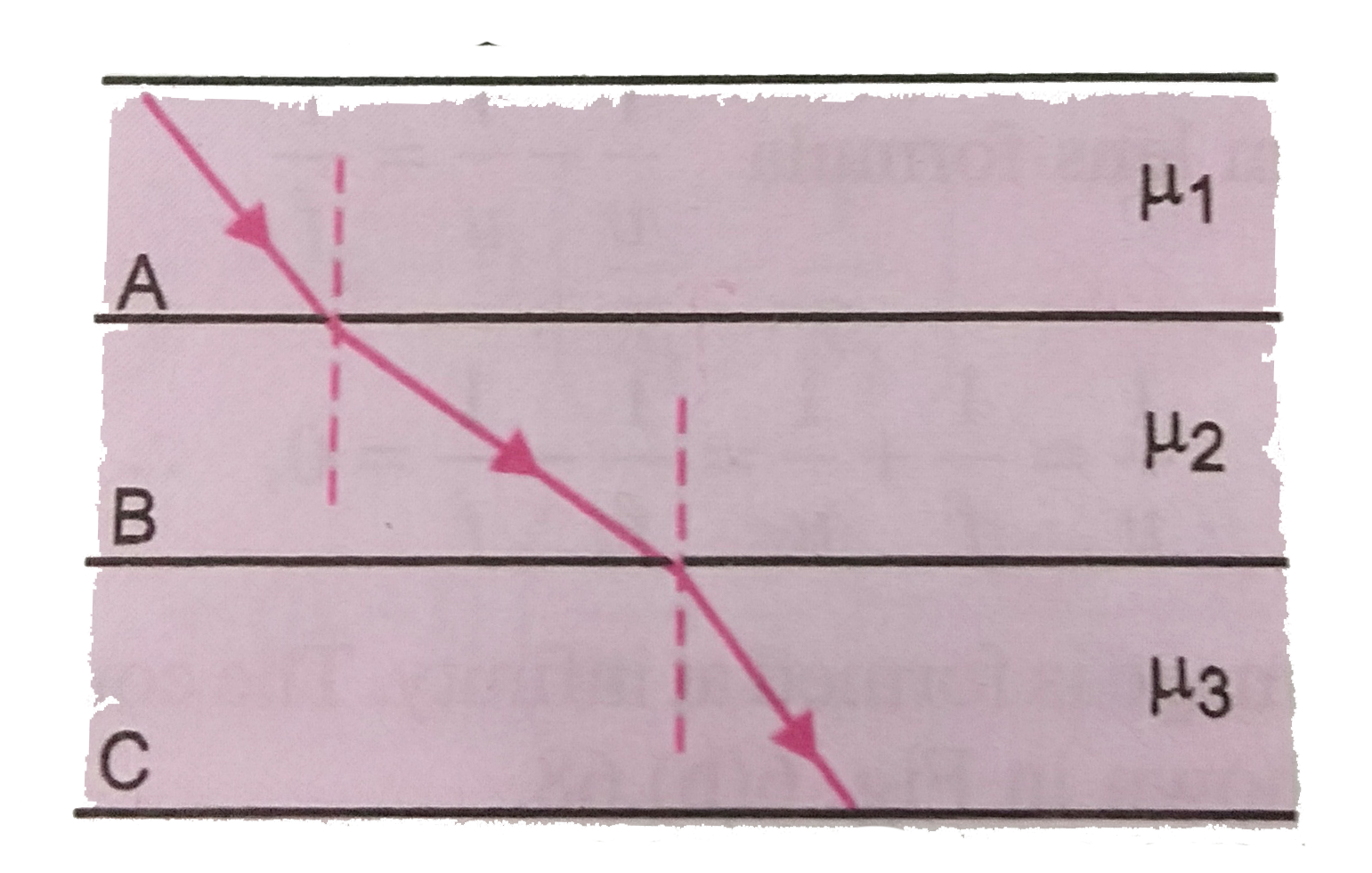 View Solution
View SolutionA convex lens of refractive index μg is held in a reansparent medium of refractive index μm If course of rays is as shown in Fig., how are μgandμm related ?
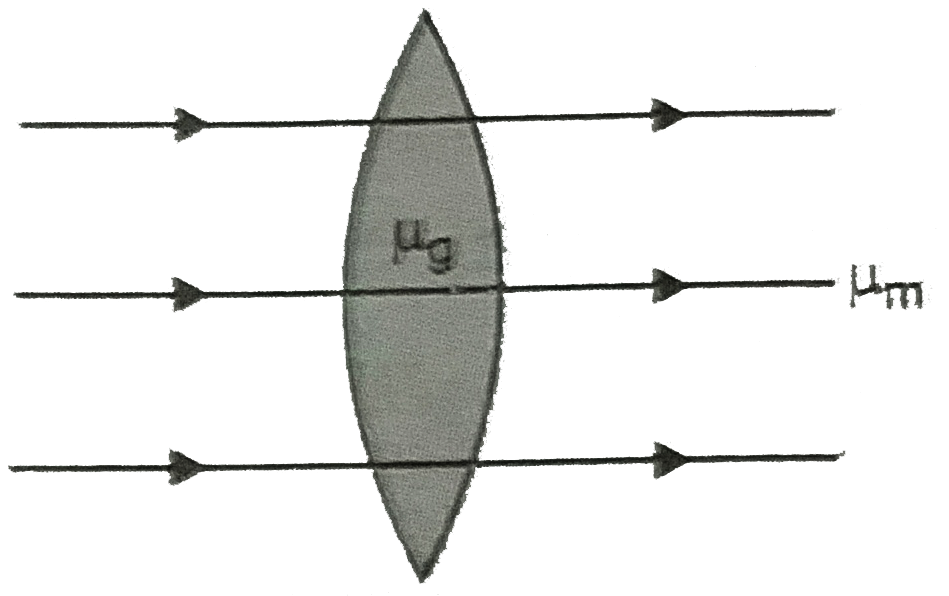 .View Solution
.View Solution
Knowledge Check
- Question 1 - Select One
A ray of light passes through four transparent media with refractive indicesμ1,μ2,μ3 and μ4 as shown in the figure. The surfaces of all media are parallel. If the emergent ray CD is parallel to the incident ray AB, we must have
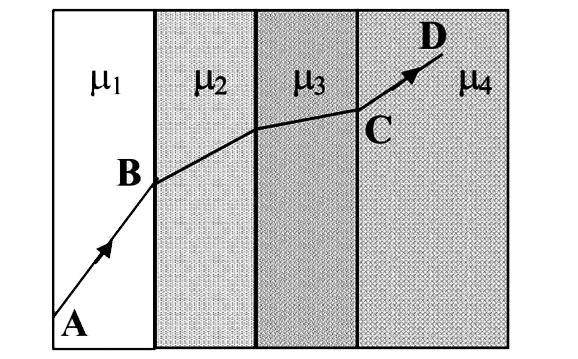 Aμ1=μ2Bμ2=μ3Cμ3=μ4Dμ4=μ1
Aμ1=μ2Bμ2=μ3Cμ3=μ4Dμ4=μ1 - Question 2 - Select One
A ray of light passes through four transparent media with refractive indices μ1,μ2,μ3,andμ4 as shown in figure. The surfaces of all media are paralle. If the emerent ray CD is parallel to the incident ray AB, we must have
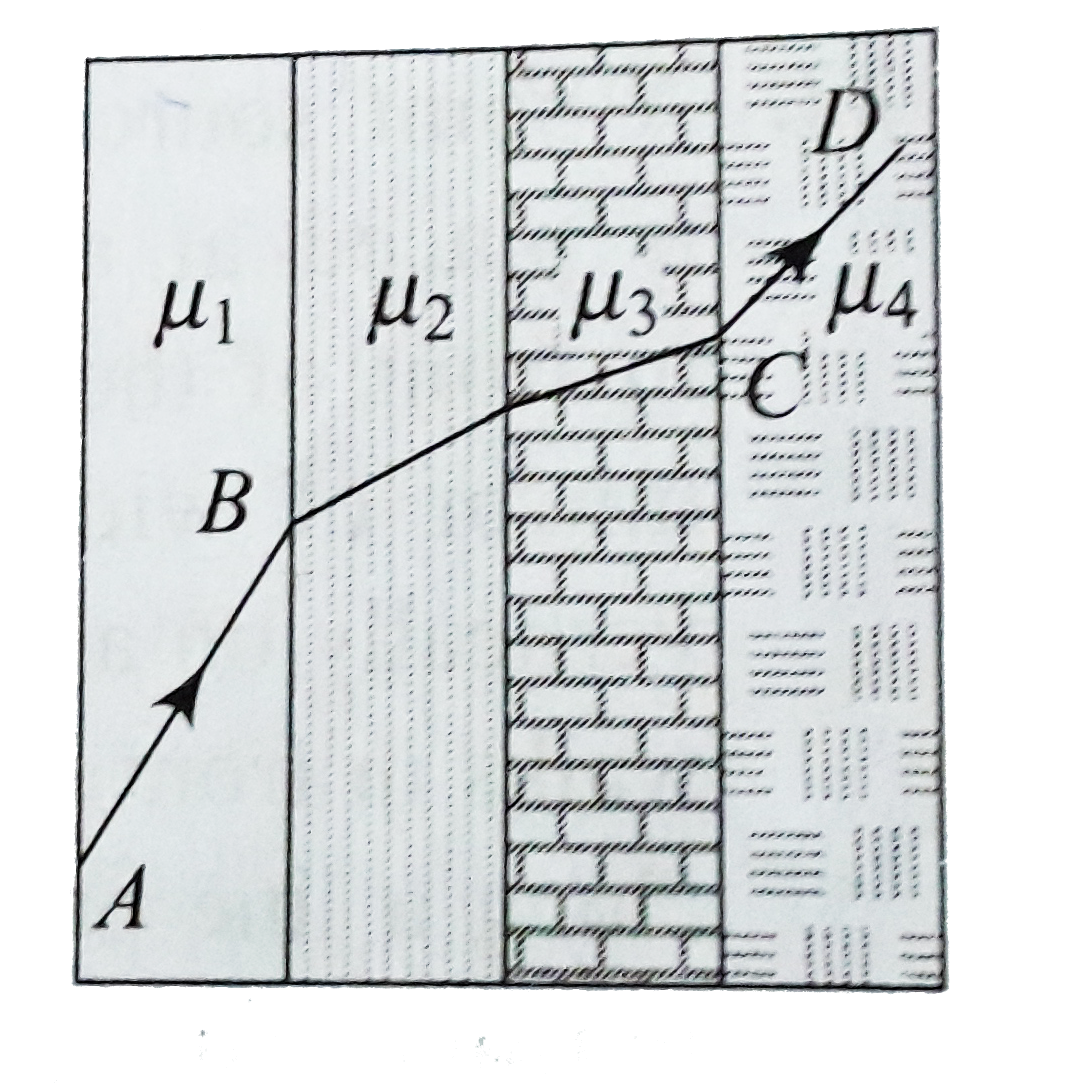 Aμ1=μ2Bμ2=μ3Cμ3=μ4Dμ4=μ1
Aμ1=μ2Bμ2=μ3Cμ3=μ4Dμ4=μ1 - Question 3 - Select One
A ray of light passes through four transpar ent media with refractive indicesμ1,μ2,μ3 and μ4 as shown in figure. The surfaces of all media are parallel. If the emergent ray is parallel to the incident ray, we must hav
 Aμ1=μ2Bμ2=μ3Cμ3=μ4Dμ4=μ1
Aμ1=μ2Bμ2=μ3Cμ3=μ4Dμ4=μ1
R is the radius of curvature for both the surfaces of lens shown in figure. Refractive index μ1,μ2andμ3 are indicated in the figure. Light rays are incident from the side of refractive index μ1 as shown. If f is focal length of lens then find f/R for μ1=1,μ2=1.5,μ3=2.
|0123456789|View Solution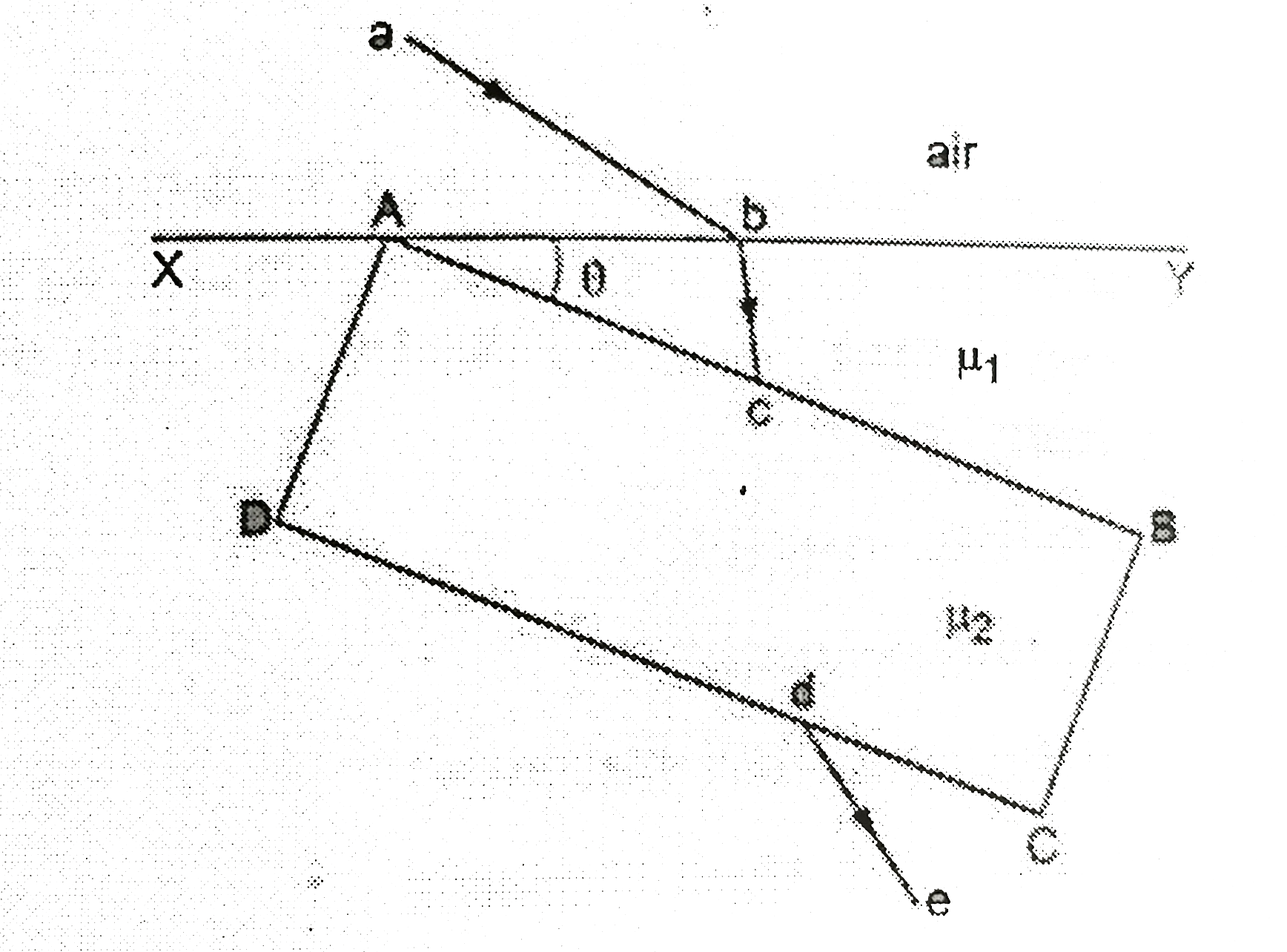
A ray of light ab passing through air enters a liquid of refractive index μ1 at the boundary XY. In the liquid, the ray is shown as bc. The angle between ab and bc ( angle of deviation) is δ. The ray then passes through a rectangular salb ABCD of refractive index μ2(μ2>μ1) and emerges from the slab as the ray de. The angle between XY and AB is θ. The angle between ab and de isView SolutionA ray of light, travelling in a medium of refractive index mu, is incident at an angle i on a composite transparent plate consisting of three plates of refractive indices μ1,μ2andμ3. The ray emerges from the composite plate into a medium of refractive index μ4, at angle x. Then,
View SolutionA ray of light enters a spherical drop of water of refractive index μ as shown in figure.
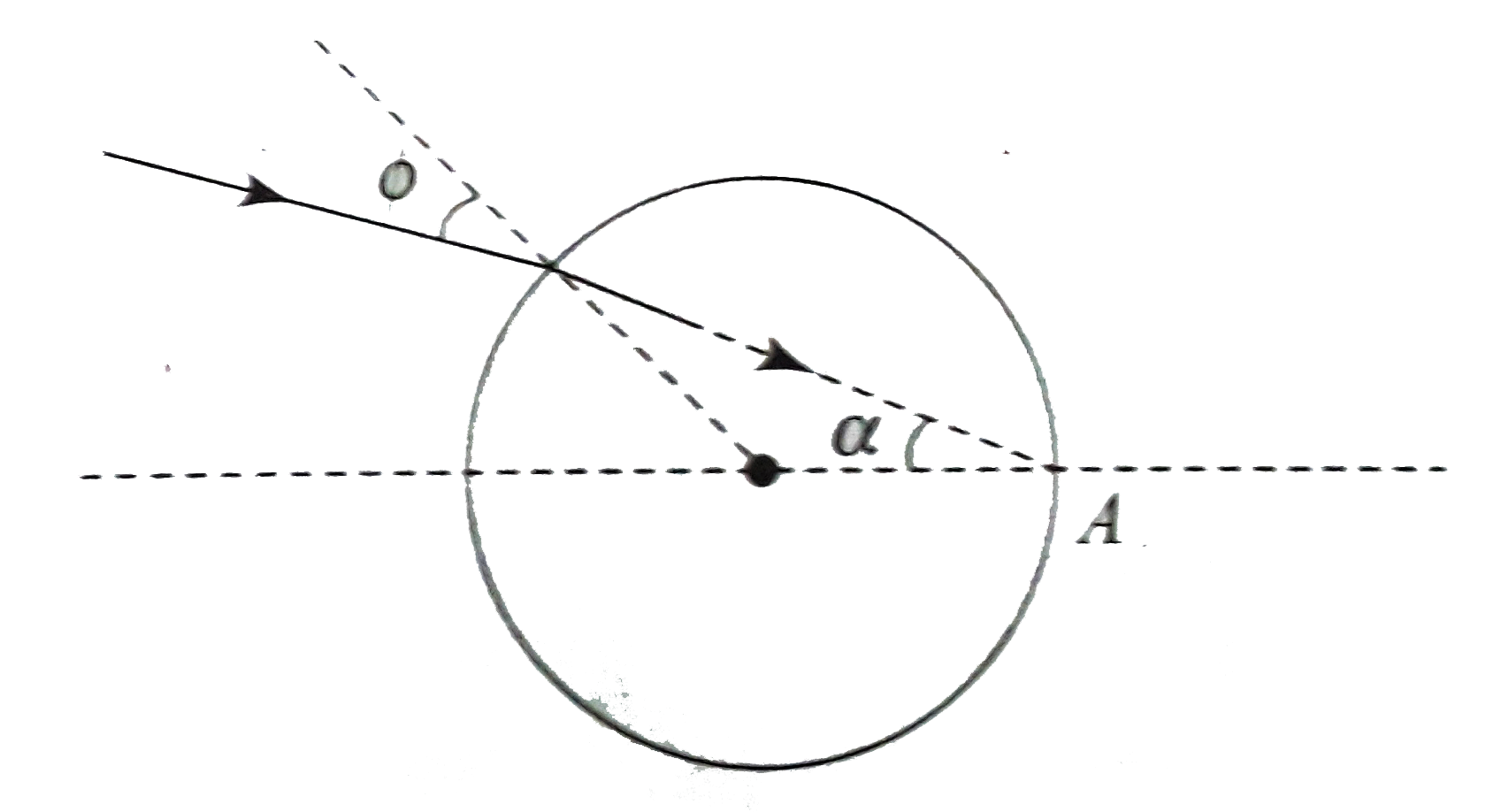
Q. Select the correct statement:View SolutionThe relation between refractive indices u,μ1,μ2. if the behaviour of light ray is as shown in figure
 View Solution
View Solution

